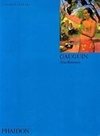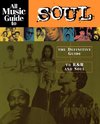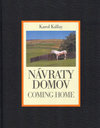
-
 Anglický jazyk
Anglický jazyk
The Shanty Book, Sailor Shanties Volume I
Autor: Richard Runciman Terry
Excerpt: ...3. GOOD-BYE, FARE YE WELL This is one of the best beloved of shanties. So strongly did its sentiment appeal to sailors that one never heard the shantyman extemporize a coarse verse to it. Whall prints a version, page 71. 4. JOHNNY COME DOWN TO... Viac o knihe
Na objednávku
13.95 €
bežná cena: 15.50 €
O knihe
Excerpt: ...3. GOOD-BYE, FARE YE WELL This is one of the best beloved of shanties. So strongly did its sentiment appeal to sailors that one never heard the shantyman extemporize a coarse verse to it. Whall prints a version, page 71. 4. JOHNNY COME DOWN TO HILO This is clearly of negro origin. I learnt several variants of it, but for its present form I am indebted to Capt. W.J. Dowdy. 5. CLEAR THE TRACK, LET THE BULLGINE RUN The tune was a favourite in Yankee Packets. It does not appear in Whall. 'Bullgine' was American negro slang for 'engine.' I picked up this version in boyhood from Blyth seamen. 6. LOWLANDS For another version see Whall (page 80), who says it is of American origin and comes from the cotton ports of the old Southern States. It was well known to every sailor down to the time of the China Clippers. My version is that of Capt. John Runciman, who belonged to that period. I have seldom found it known to sailors who took to the sea after the early seventies. The tune was sung in very free time and with great solemnity. It is almost impossible to reproduce in print the elusive subtlety of this haunting melody. In North-country ships the shantyman used to make much of the theme of a dead lover appearing in the night. There were seldom any rhymes, and the air was indescribably touching when humoured by a good hand. A 'hoosier,' by the way, is a cotton stevedore. An interesting point about this shanty is that, whether by accident or design, it exhibits a rhythmic device commonly practised by mediæval composers, known as proportio sesquialtera. Expressed in modern notation it would mean the interpolation of bars of three-four time in the course of a composition which was in six-eight time. The number of quavers would, of course, be the same in each bar; but the rhythm would be different. The barring here adopted does not show this. 7. SALLY BROWN For another version of this universally known shanty see Whall, page 64. Although its musical form is...
- Vydavateľstvo: Books LLC, Reference Series
- Rok vydania: 2014
- Formát: Paperback
- Rozmer: 246 x 189 mm
- Jazyk: Anglický jazyk
- ISBN: 9781153756648







 Ruský jazyk
Ruský jazyk 



 Nemecký jazyk
Nemecký jazyk 
